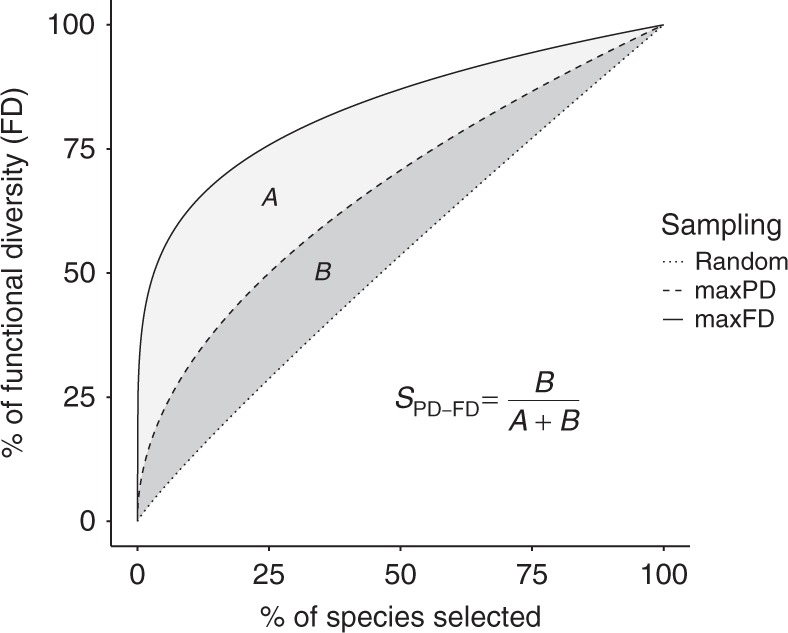Fig. 1.

A conceptual approach for evaluating whether PD is a good surrogate for FD. To evaluate if PD is a good surrogate of FD, we measure to what extent a species prioritization strategy that maximize PD captures FD relative to an optimal and a random strategy. To do so, we compare FD accumulation curves (i.e., FD computed for increasing proportion of the species pool considered) across these three different sampling strategies: the random sampling (i.e., rarefaction curve, averaged over 1000 sets), the maxPD sampling, and the maxFD (optimal) sampling (i.e., sets that maximize FD, see legend). Then, we measure the surrogacy of PD for FD (SPD–FD) as the area between the random and the maxPD curve (“A”, see legend) divided by the area between the random and the maxFD curve (“A + B”, see legend). If SPD–FD is positive, PD is a good surrogate for FD (the maximum value being 1 where PD is an optimal surrogate) while when SPD–FD is negative preserving species based on PD is worse than preserving them at random
